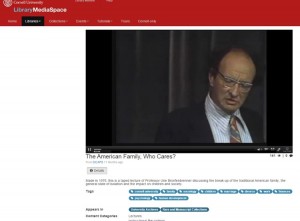Category Archives: Changing Families
Changing Dynamics of Union Formation and Dissolution
VOLUME 36 – ARTICLE 12 | PAGES 371-390
A reflection on the changing dynamics of union formation and dissolution
Background: This paper reflects upon the remarkable demographic transformation that has taken place among unions around the world. I establish the study of unions in a historical context with respect to its place in demographic studies in general.
Objective: I assess the similarities and differences across nations among patterns, trends, and differentials in the determinants and consequences of both marital and nonmarital unions. I focus on data from the United States and a number of other nations, mostly from Europe. Among the vast changes that have transpired over the course of the past several decades I pay special attention to demographic aspects of same-sex unions, as viewed through recently available data, and compare them to the dynamics of opposite-sex unions.
Methods: I draw upon research conducted by others to examine several global trends and differentials in union formation and dissolution. Further, I explore what constitutes ‘dissolution’ in the United States, and for whom. In addition, I discuss the impact of divorce on the economic well-being of spouses in the United States, with particular emphasis on the relative severity of the consequences for women versus men, as well as the factors underlying this differential.
Conclusions: Given the notably broader diversity of unions in the world today, the work of demographers has become substantially more complex than was the case years ago. That complexity notwithstanding, it is especially gratifying that we are rapidly accumulating data with which we can assess the dynamics of all unions, and not merely those of the marital or opposite-sex variety.
Author’s Affiliation
Neil G. Bennett – City University of New York, United States of America
Social Acceleration — Hartmut Rosa
Recent TED talk in which he talks about social acceleration and resonance.
Social Acceleration
Hartmut Rosa advances an account of the temporal structure of society from the perspective of critical theory. He identifies three categories of change in the tempo of modern social life: technological acceleration, evident in transportation, communication, and production; the acceleration of social change, reflected in cultural knowledge, social institutions, and personal relationships; and acceleration in the pace of life, which happens despite the expectation that technological change should increase an individual’s free time.
According to Rosa, both the structural and cultural aspects of our institutions and practices are marked by the “shrinking of the present,” a decreasing time period during which expectations based on past experience reliably match the future. When this phenomenon combines with technological acceleration and the increasing pace of life, time seems to flow ever faster, making our relationships to each other and the world fluid and problematic. It is as if we are standing on “slipping slopes,” a steep social terrain that is itself in motion and in turn demands faster lives and technology. As Rosa deftly shows, this self-reinforcing feedback loop fundamentally determines the character of modern life.
Bronfenbrenner Lecture on the State of the American Family 1976
Here is a 1 hour lecture by Urie Bronfenbrenner in 1976 talking about the challenges facing families. This lecture was presented during the time just before he published his major work on The Ecology of Human Development (1979). 

